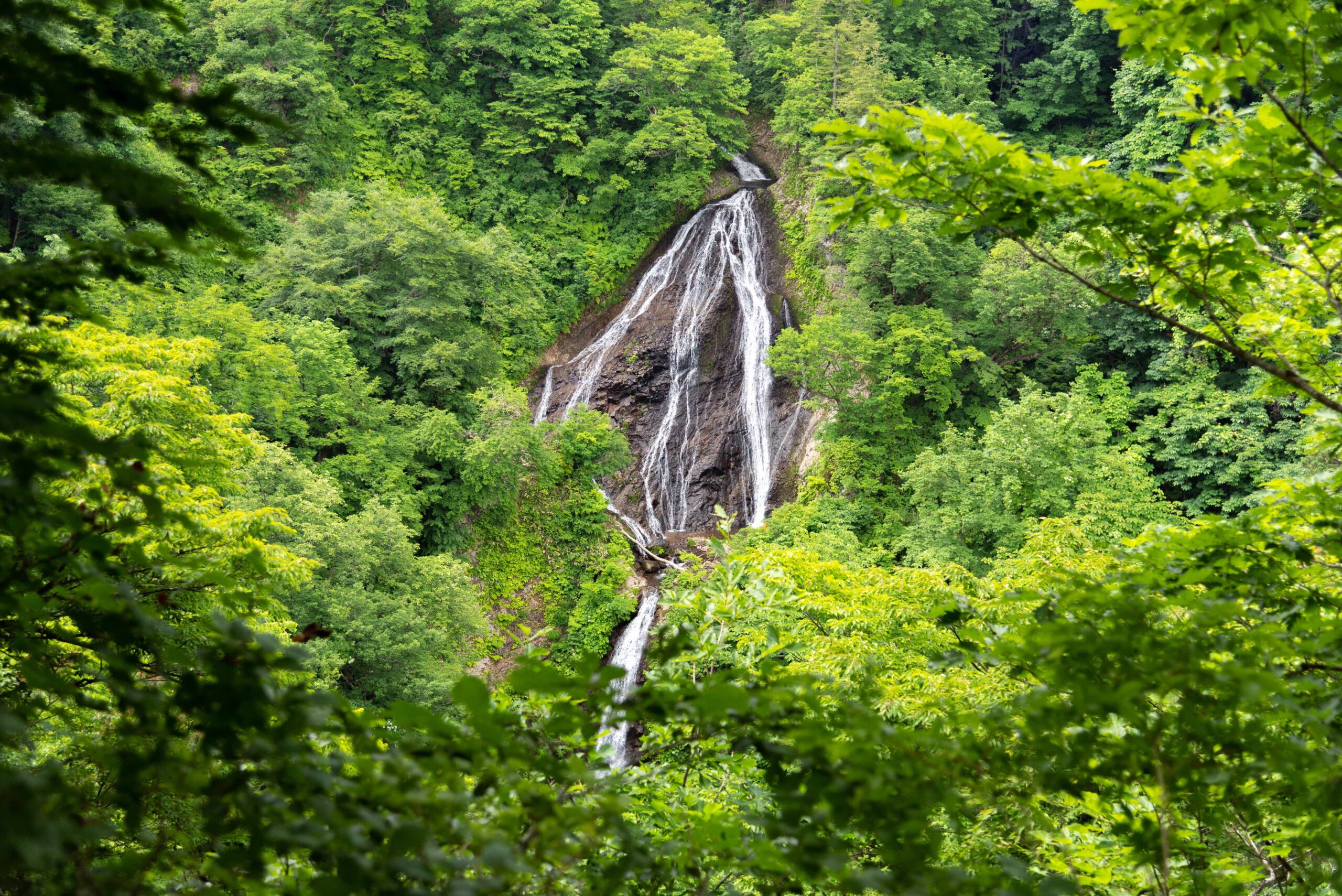

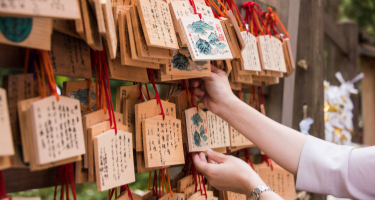
 News
News
Refine by date

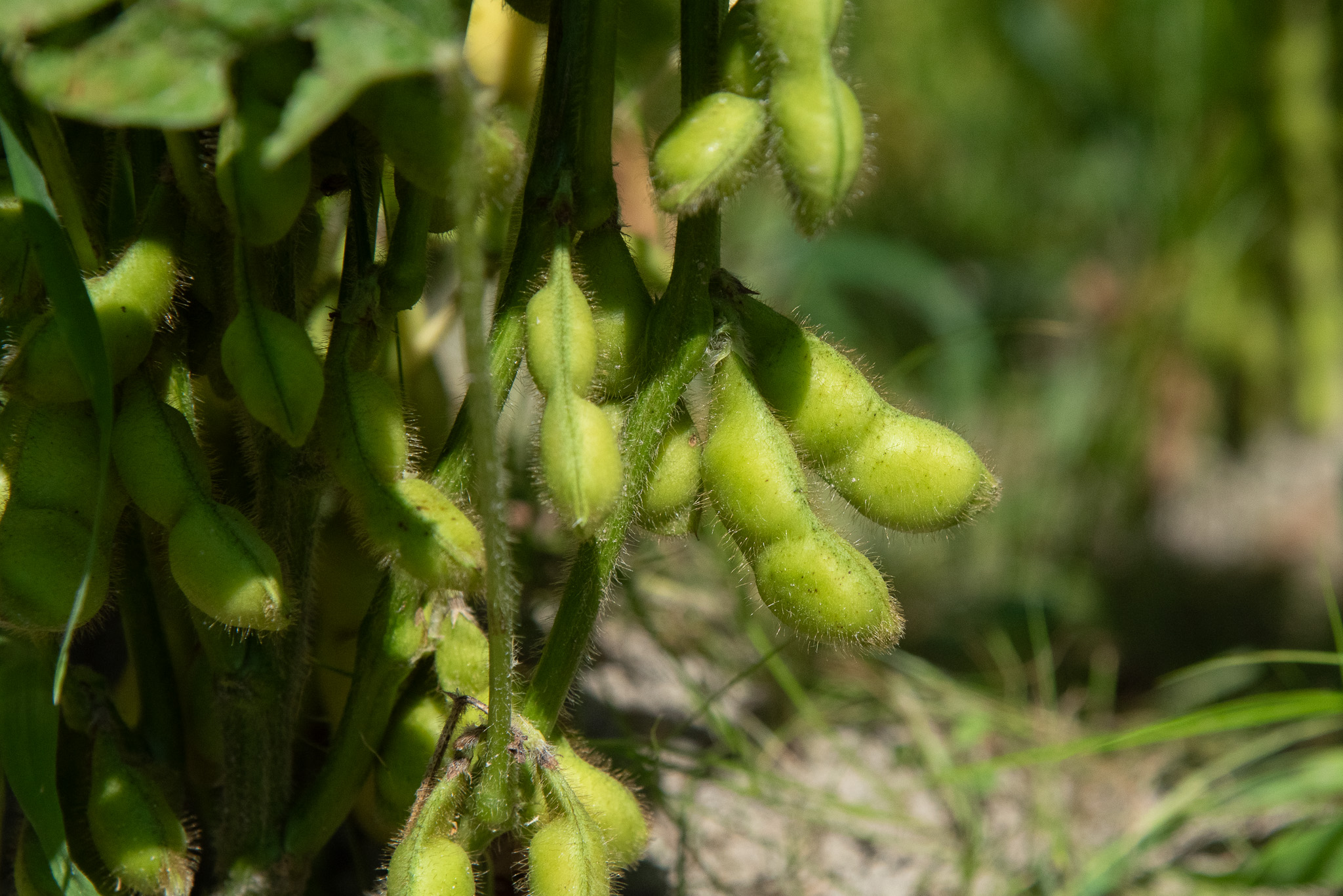
Dadachamame beans
Dadachamame soybeans, Shonai region’s special variety of edamame, exude a delightful roasted aroma when boiled, and as they touch your taste buds, they unveil their sweetness and umami. These beans have gained nationwide recognition and even featured in a commercial by a well-known beer company, establishing themselves as the finest edamame produced in Tsuruoka.
What makes Dadachamame truly special is their distinctive fragrance and the deepening sweetness that intensifies with every chew – making them the undisputed “King of the Edamame”. There’s a wide range of varieties within this lineage, with early harvest varieties hitting the market around mid-July and the peak season arriving shortly after the Obon Festival, extending through mid-September.
Dadachamame are notably finicky edamame; even when grown from the same seed in other regions, their unique characteristics tend to disappear, an idiosyncrasy well-suited to the local conditions of Tsuruoka.
The term “Dadacha” in the local dialect of Shonai means “father” or “dad” (“mame” meaning “bean”). Legend has it that the lord of the Shonai Domain, who had a fondness for edamame, would ask where each batch of edamame came from and declared, “Whose dad has grown this edamame I’m eating today?” Over time, this led to the nickname “Dadachamame.”
Dadachamame are recognized by their brown fuzz and deep indentation in the pods. When boiled, they release a unique aroma reminiscent of corn, and their flavor deepens and becomes more delicious with every bite. It is said that even if the same seeds are cultivated in other regions, the specific umami of Dadachamame tends to disappear.
People like to boil them for a few minutes with a pinch of salt, to eat them cold with a fresh pint of beer.

Shonai persimmon
The “Hiratanenashi” 平核無 (“seedless flat”) persimmon, which is cultivated throughout the Shonai region, is native to the region. The original trees of Shonai persimmons can still be found in Torigi-cho, Tsuruoka City, and they are designated as natural monuments of Tsuruoka City. This variety of persimmon is characterized by its seedless nature, square and flat shape, and firm flesh. After the astringency is removed (using fizzy water or alcohol then sealing the fruits to rest for a few days), it becomes pleasantly sweet with a refreshing taste.
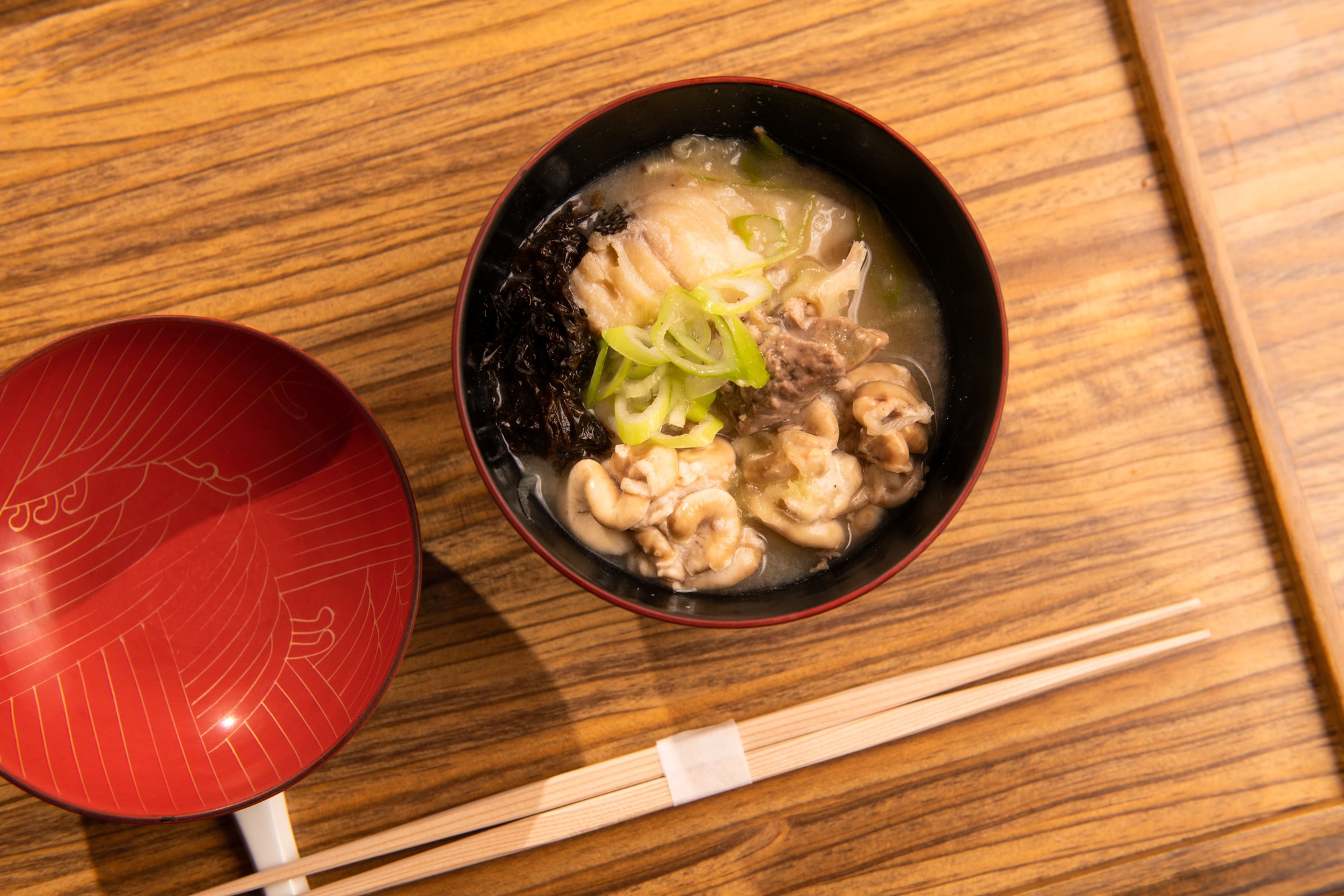
Kandara-jiru: Black cod soup
During the winter in Tsuruoka, a local specialty known as “Kandara-jiru” is made using winter cod, also known as “Kandara.” These cod are rich in fat and migrate to the rough waters of the Japan Sea for spawning during the harsh winter. Kandara-jiru is a truly indulgent and hearty dish that uses the entire cod, including its liver and milt, in a miso-based hot pot.
In the midst of the severe cold of the season, locals have been enjoying piping hot Kandara-jiru to warm both their hearts and bodies for generations. The cod, with its ample fat, offers a simple yet sweet flavor, while the fresh milt is tender and free of any undesirable odors, providing a melt-in-your-mouth texture. By the time you’ve savored every last drop of the soup, your entire body will be comfortably warm. This is a Tsuruoka pride, a taste that can only be enjoyed during the winter.
The dish also features leek and tofu.
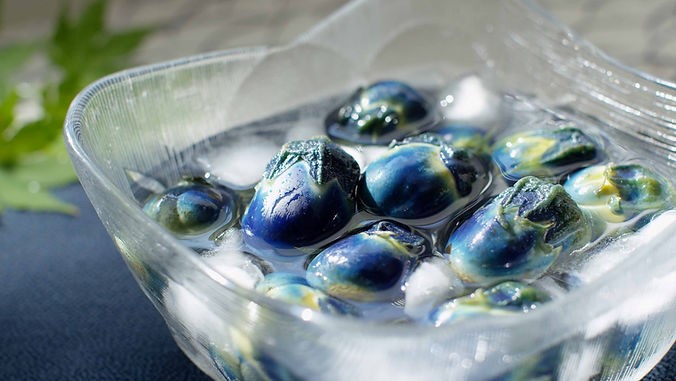
Minden eggplant
In Tsuruoka’s rural areas, there is a tradition of cultivating small, round eggplants with firm flesh. These eggplants are often referred to as “Minden nasu,” and they are known for their excellent texture. It is said that the first eggplant mentioned in Matsuo Basho’s “Oku no Hosomichi” (“The Narrow Road to the Deep North”) was the “Minden nasu” (known as “Sotonaito-jima Nasu” at the time), suggesting its historical significance in the region.
The minden eggplant is commonly eaten as tsukemono, pickled in a mustard cream (karashizuke 辛子漬け) or in salt (asazuke 浅漬け).
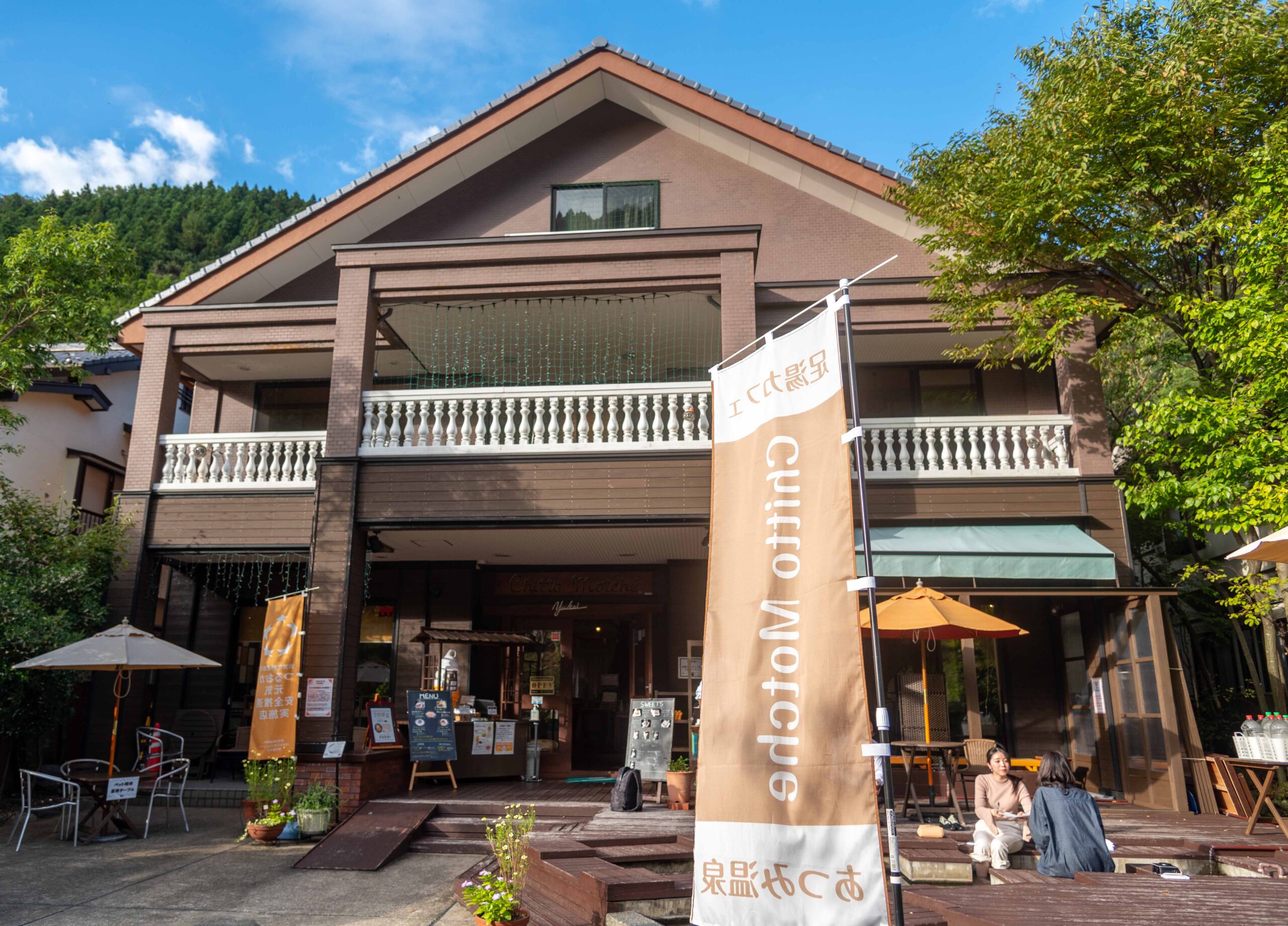
“Chitto Mosshe” Café & Footbaths
The facility’s nickname, “Chittomoshe,” comes from the local dialect in Atsumi, which means “a bit funny.” Inside the building, there’s an exhibition space where you can find and purchase various folk crafts from the Atsumi region and beyond. Additionally, there’s an open deck with a foot bath called “Mosshe-yu.” (Entrance and use of the foot bath are free. Please bring your own foot bath towel or purchase the original logo towel on-site.)
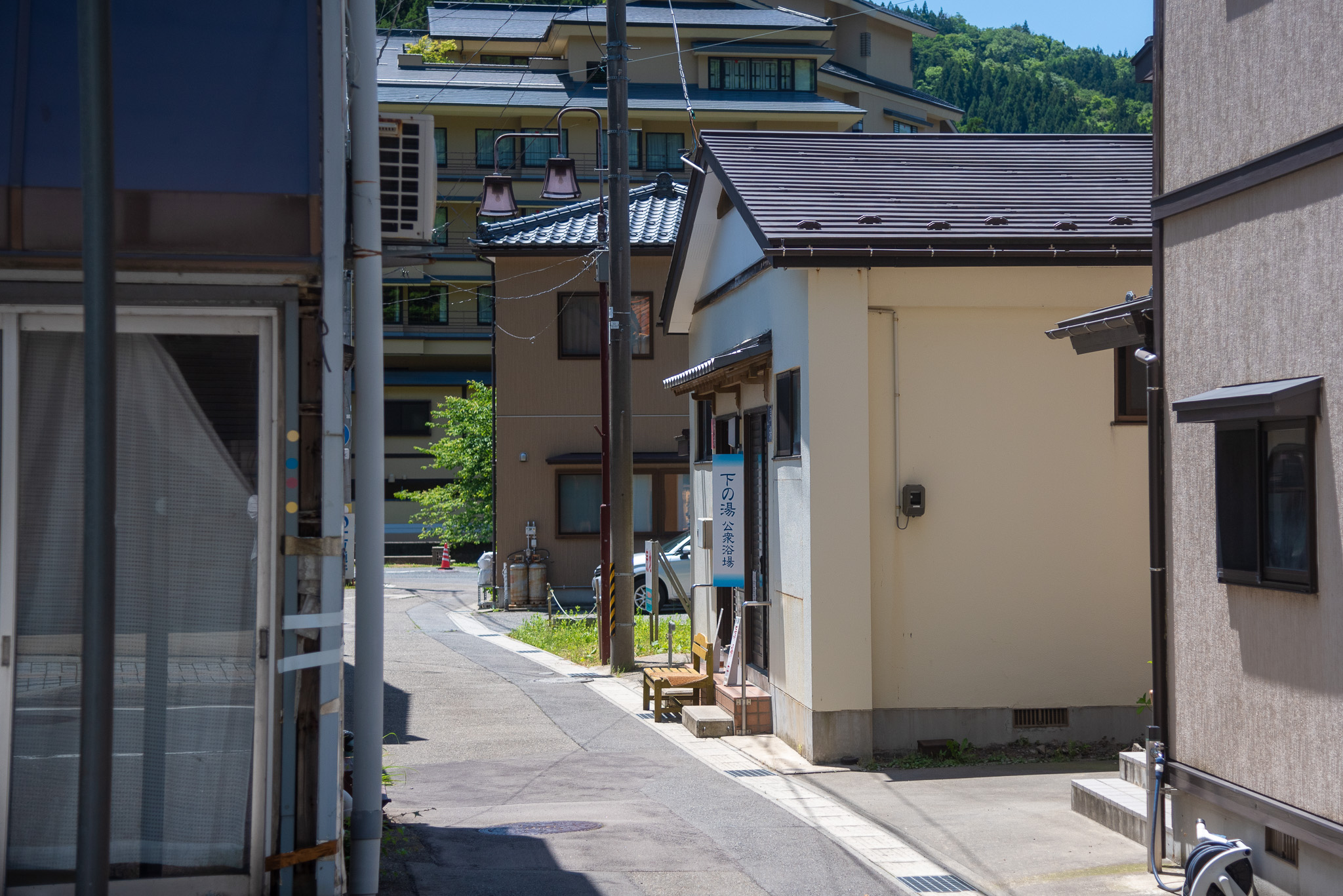
Atsumi Onsen’s Public Bath
In Atsumi Onsen, there are three public bathhouses that are cherished by the local residents. These bathhouses offer natural spring water, and the water temperature is on the hotter side. Please bring your own towels and soap.
● Shomen-yu
Hours: 6:00 AM – 8:00 AM, 11:00 AM – 10:00 PM (Closed for cleaning from 8:00 AM – 11:00 AM)
300 yen per person (please pay in the donation box)
● Shimonoyu
Hours: 6:00 AM – 11:00 AM, 2:00 PM – 10:00 PM (Closed for cleaning from 11:00 AM – 2:00 PM)
300 yen per person (please pay in the donation box)
● Yunosato Public Bathhouse
Hours: 2:00 PM – 10:00 PM
200 yen per person (please pay in the donation box)
Water properties:
● Sodium-Calcium-Chloride-Sulfate
● Natural Spring Water Temperature: 68 degrees Celsius
● Beneficial for: Cuts, burns, eczema, common skin conditions, neuralgia, rheumatism, women’s health, glandular diseases, recovery from various illnesses
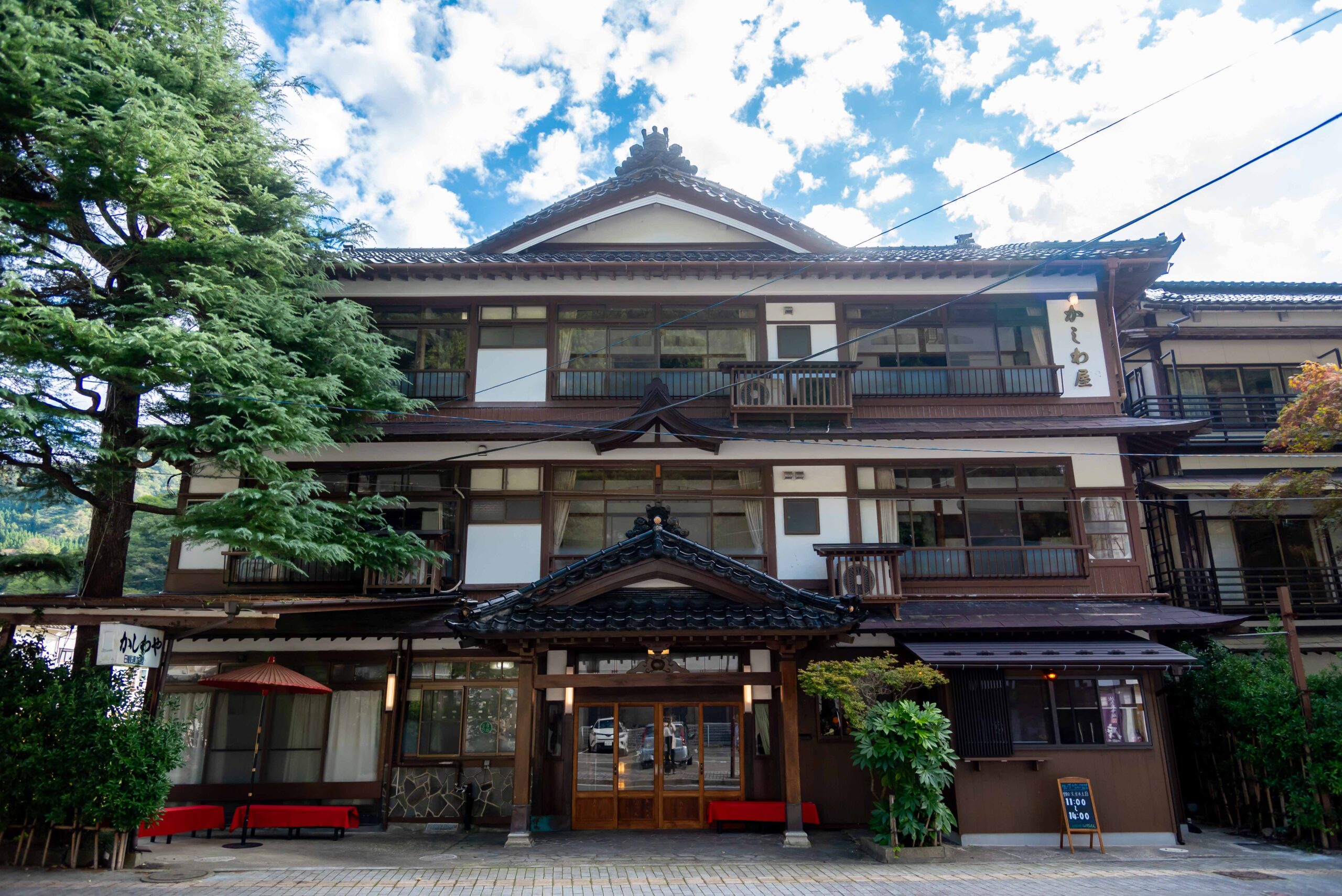
Kashiwaya
Kashiwaya, nestled within the charming hot spring village of Atsumi Onsen, boasts a rich heritage spanning 380 years. This small and traditional ryokan exudes its unique allure with a wooden architectural design and cozy, inviting rooms. Kashiwaya’s warm ambiance captures the essence of a bygone era. What sets Kashiwaya apart is its delightful addition—a crepe shop right outside the bathhouse, offering a delectable treat to complete your soothing onsen experience.
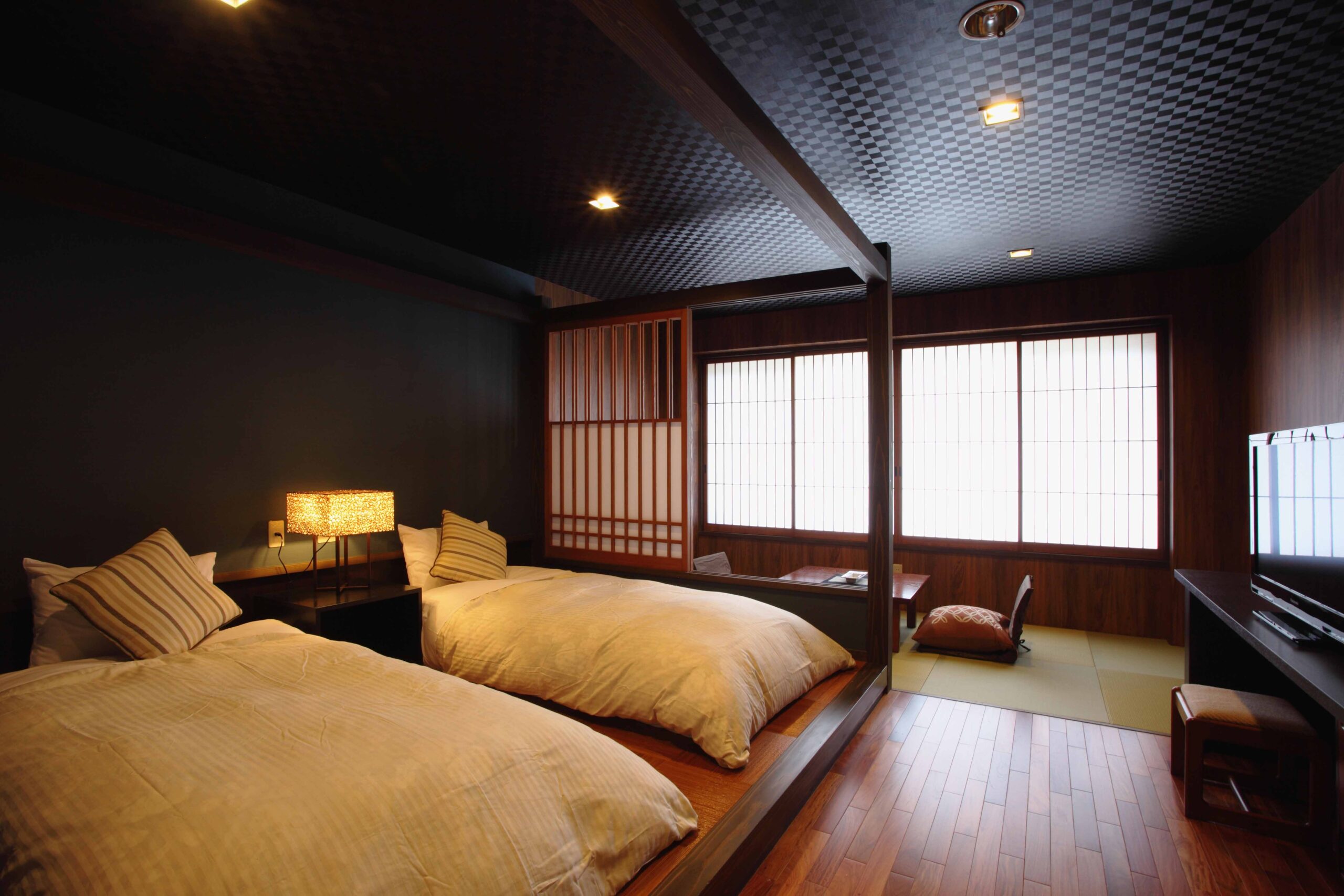
Kuon
Kuon is a contemporary and stylish hot spring destination in Atsumi Onsen. While it boasts spacious indoor baths, Kuon’s appeal doesn’t stop there. The establishment offers the unique experience of outdoor barrel baths, adding a touch of rustic charm to its modern setting. Additionally, for those seeking a different kind of comfort, Kuon provides rooms with European-style beds, catering to a diverse range of preferences and ensuring a comfortable and memorable stay.
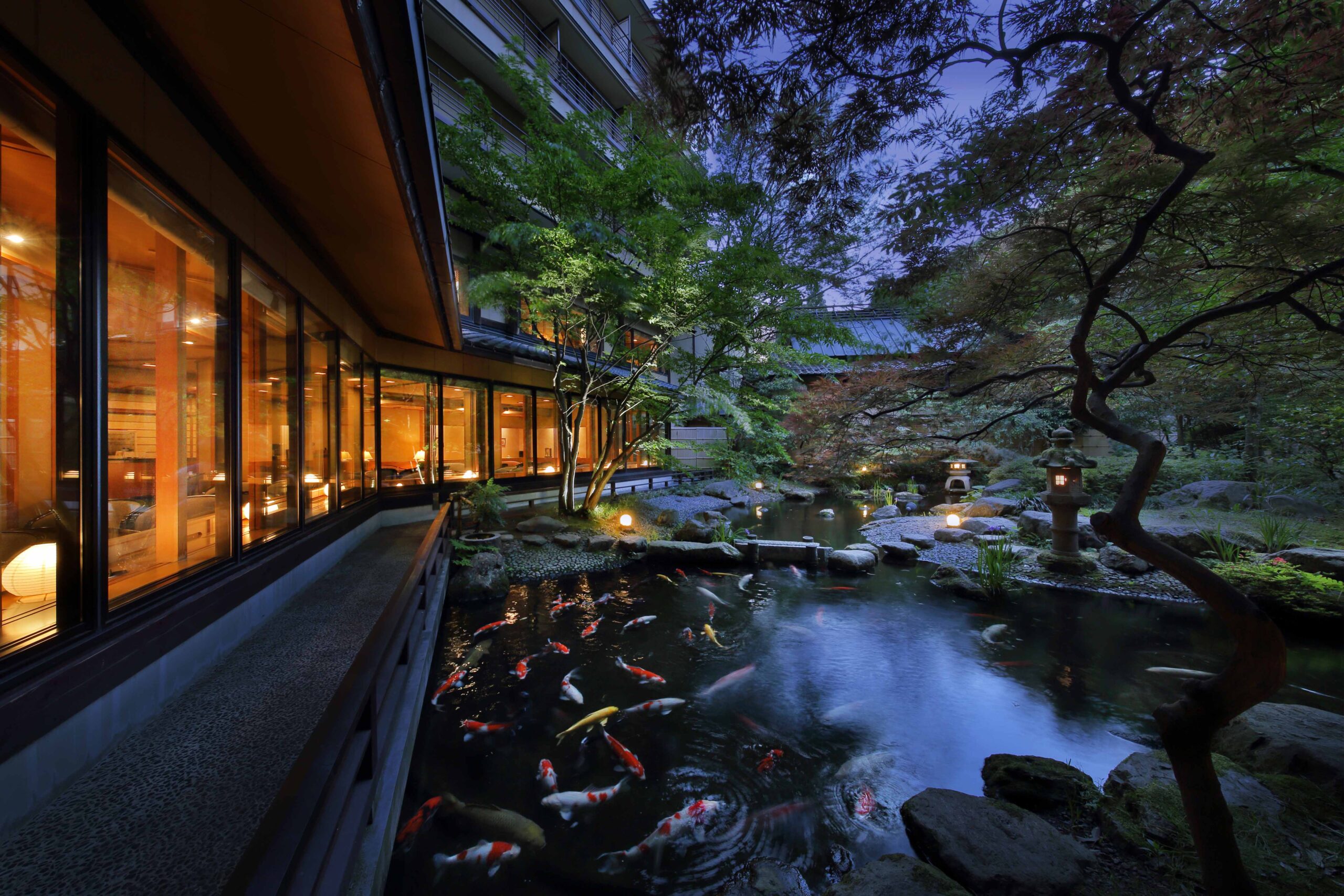
Tachibanaya
Tachibanaya, one of the oldest establishments in Atsumi Onsen, has a storied history dating back 370 years. Over the centuries, it has earned a stellar reputation for embodying the quintessential Japanese concept of “omotenashi,” or wholehearted hospitality. The charm of Tachibanaya lies in its wooden outdoor baths, its meticulously tended Japanese gardens graced by beautiful koi carp, and its traditional Japanese rooms. These exceptional features have drawn distinguished guests, including the Imperial Couple in the post-war era, making it a cherished destination for those seeking a genuine taste of Japanese tradition and warm hospitality.
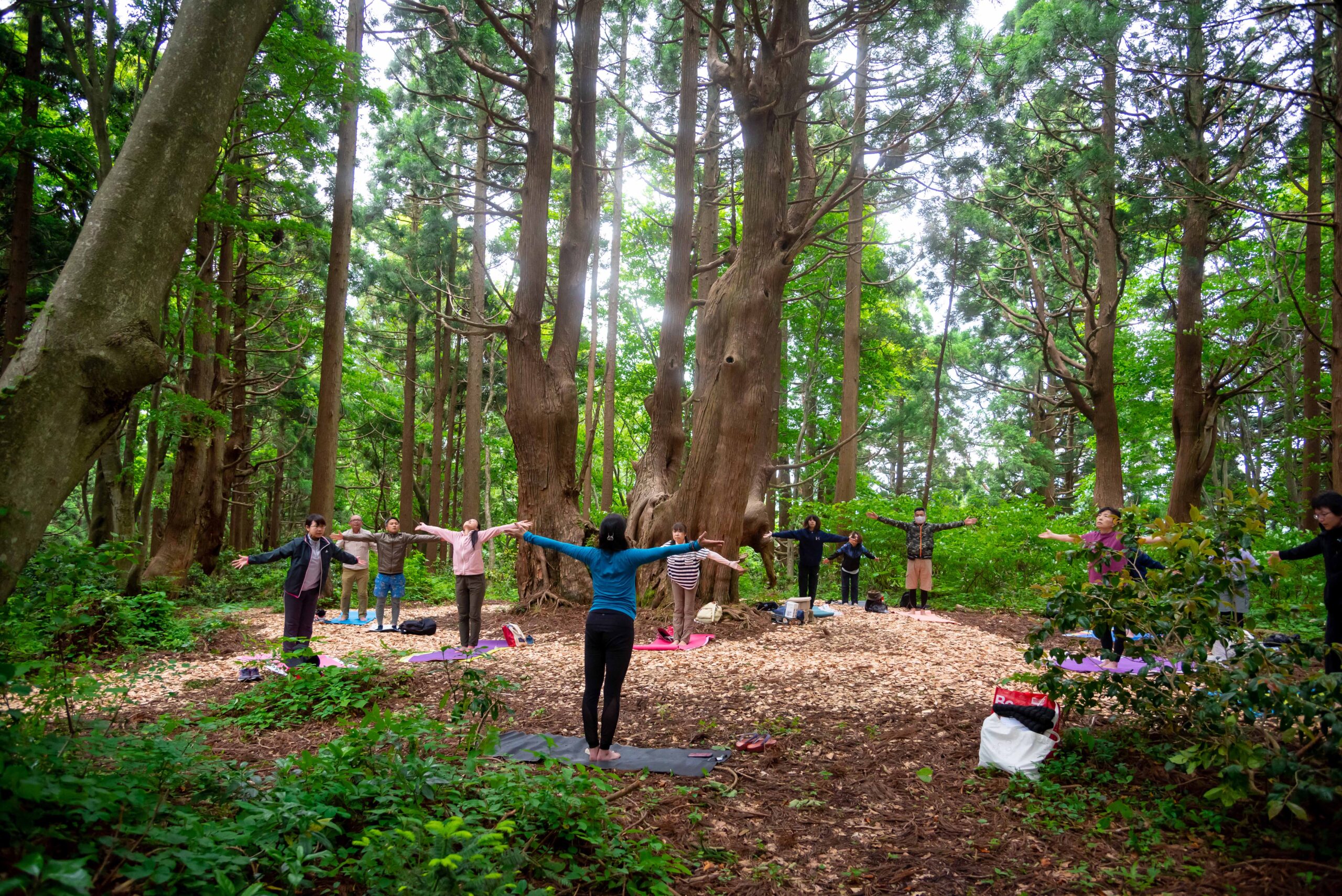
Genso no Mori, the “Forest of Illusions” (Tozawa Village)
Near the Mogami-gawa Gorge, in Tozawa village, lies a notable site known as the ‘Forest of Fantasy.’ This woodland is home to ancient cedar trees, each boasting an age of over 1000 years. Nestled in a secluded spot, the forest offers a serene ambiance. Well-maintained walking paths, covered with wood chips, ensure easy exploration without worries of losing your way. It has gained popularity as a destination for those seeking a tranquil retreat and photography enthusiasts.At an elevation of 260 meters, the ‘Forest of Fantasy’ becomes inaccessible to vehicles from late December to early May due to heavy snowfall. Even if the entrance to the forest road seems snow-free, it’s essential to note that higher elevations may still retain snow cover. Hence, it’s advisable to refrain from entering until an official notice of accessibility is issued.A few times a year or on demand, outdoor yoga/meditation classes are led in the forest, guided by Masayo Ueno, a former doula who runs a yoga classroom in Tsuruoka City.
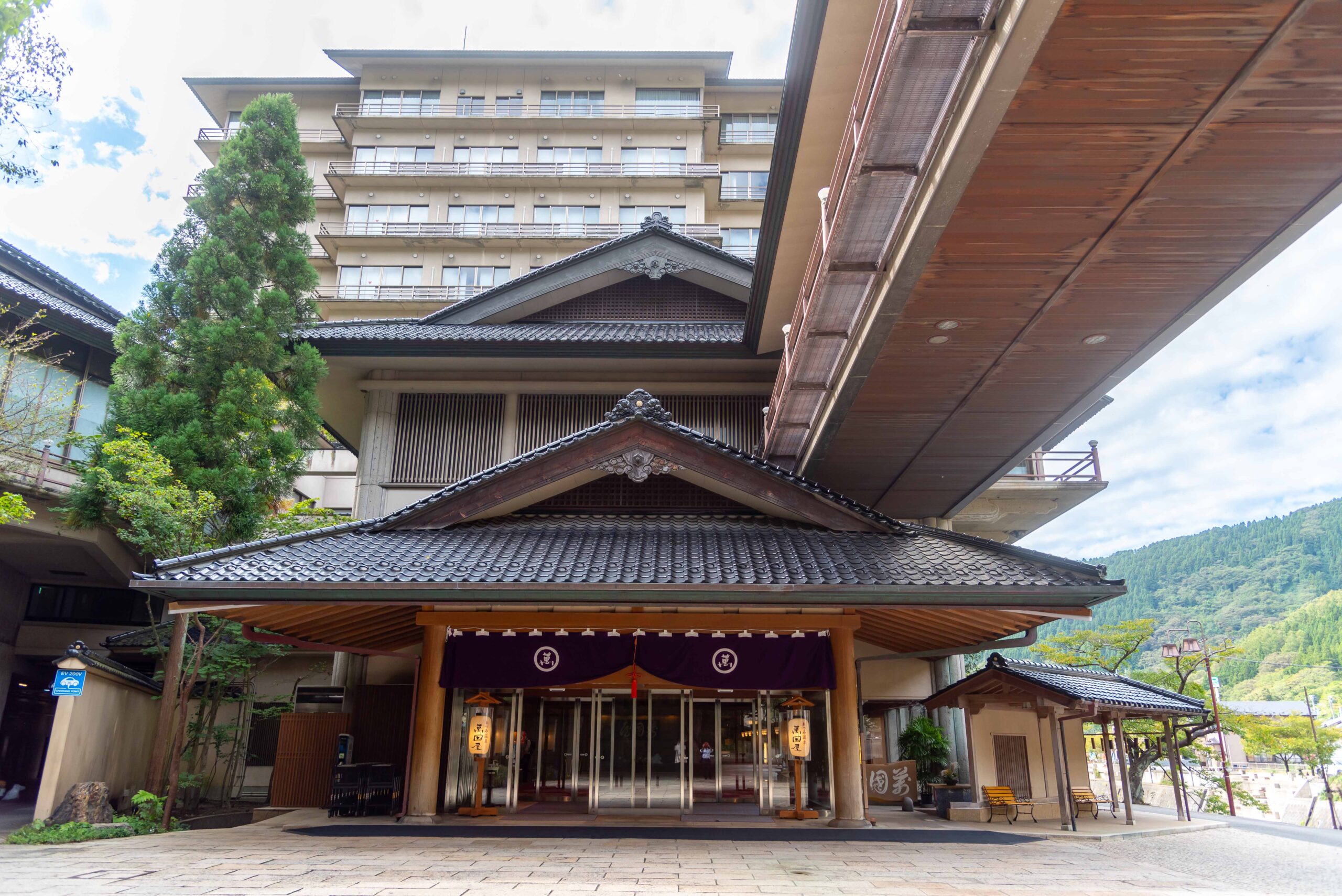
Bankokuya
For three centuries, this esteemed establishment has held a distinguished position, earning a place in “Japan’s top 100 Hotels & Ryokan” without fail for a remarkable four decades. Within its hallowed walls, guests can relish the offerings of outdoor baths, traditional wooden baths, and luxurious silk baths, ensuring a serene and rejuvenating experience.
